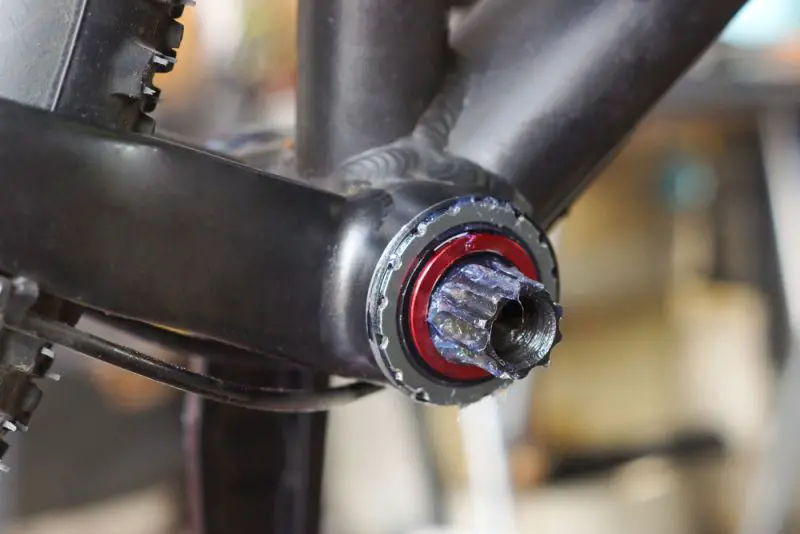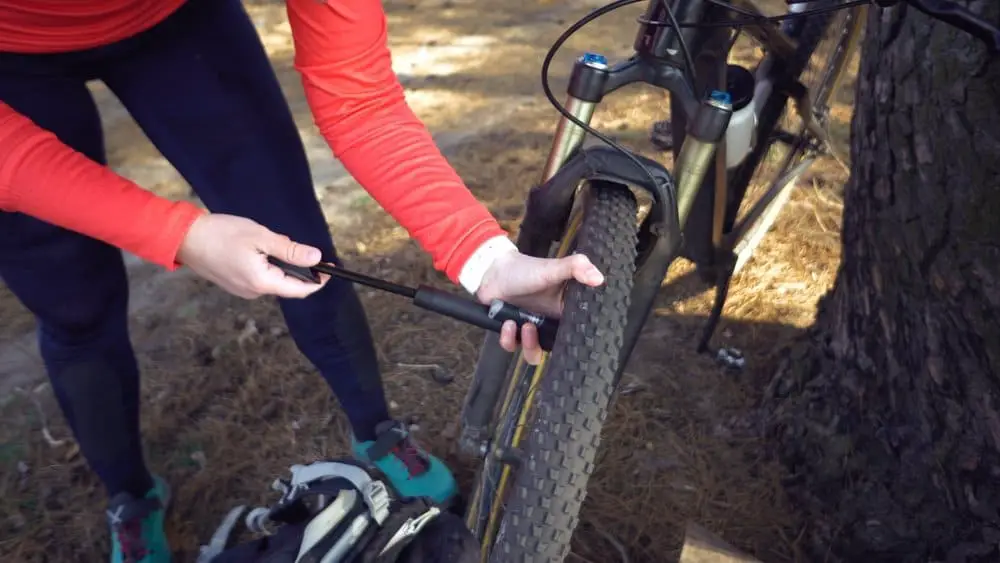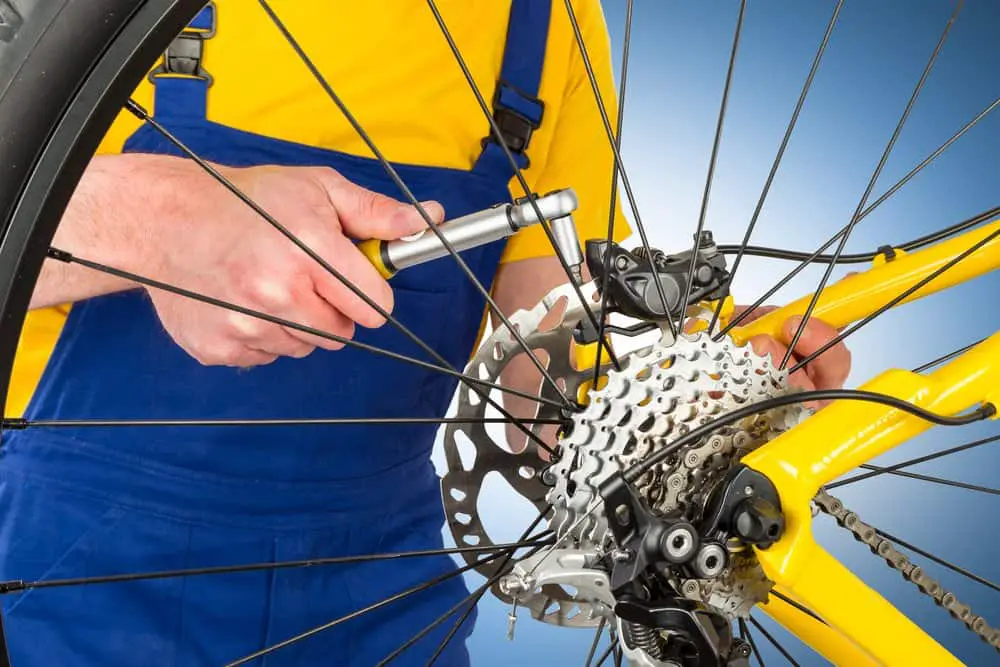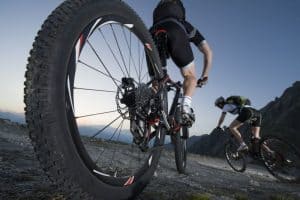Last Updated on October 31, 2023
Mountain biking is downright fun. However, it can be a big hassle, especially if you are having difficulty pedaling it down the trails or wherever you may be.
This is why many new mountain bikers easily give up on cycling, not knowing that they only need to do a few tweaks and adjustments to their bike to avoid the issue.
In this article, we will dive deep into that problem and discuss the many common reasons why your mountain bike might be hard to pedal.
We will also show you the solutions so you can avoid these issues and have a better time out on the trails.
Dirt and grime
The most common reason why you might find it hard to pedal your bike is that there is a lot of dirt and grime sticking to it. These can drastically affect your performance, especially if it stick on the frame, wheels, and drivetrain.
Check your frame, especially its down tube, and see if any mud is sticking on its surface. If there are, then they’re putting more weight on your bike.
There might also be dust and small dirt particles stuck on your chain and cranks which make the pedaling motion rough.
Make it a habit to clean your bike every after-ride. A simple wash with gentle water pressure from the hose is enough. Also, consider hanging your bikes in your garage or storage space to keep them off the floor surfaces that are probable sources of dirt.
Damaged bottom bracket

A damaged bottom bracket is a huge problem because you can’t pedal properly. You see, your pedals and crank are connected directly to your bottom bracket, which is locked inside the bottom-most part of your downtube.
What usually happens is that the bottom bracket has rust in it, which is why it becomes loose and functions poorly.
If this is the case, it is best to have your local bike shop service your bottom bracket. They will also regrease it for smoother performance.
Wrong gear
Most beginner mountain bikers don’t know that gearing is a very important part of mountain biking. You need to be in the right gear depending on your speed, terrain, and level of inclination so you can pedal easily.
If you are climbing and find it too hard to pedal and move forward, then simply shift to the higher gear to gain momentum. This also makes it easier to pedal because you don’t have to exert much effort trying to move through the big cassette than if you are in a lower gear.
Flat tire

This is another very obvious reason why some bikes become hard to pedal. However, these might not be easily seen because they might appear as a low PSI setup.
This is why you need to ensure you’re running on the right tire pressure. If you’re into cross-country mountain biking, you should maintain a 30 to 40 tire pressure at the front and rear wheel, respectively, so that you’ll have faster rolling tires.
Although this might compromise your grip, this will surely make you faster. You also have to exert less effort in pedaling because there is minimal contact between the tires and the ground.
Damaged hubs
Hubs are another vital component of your bike because they allow your wheels to turn depending on how much effort you exert when pedaling.
We recommend that you have your local bike shop service your hubs regularly, at least once every two months. Servicing means that the hubs undergo regreasing and part alignment so that all their components are in place.
Derailed chain
Although derailed chains aren’t any more a big problem anymore today because of the huge technological advancements that drivetrains have, especially with the premium ones, they can still happen now and then.
This is especially true if you are riding on very rocky trails or technical downhill sections. And often, you won’t notice that your chains have been derailed from their proper position.
This is why you need to check it constantly. What usually happens is that the chain can be suddenly place a cog higher or lower than what is at the right speed.
You can avoid this by lubricating your chain to smoothly follow your shifting motion from the lever.
Hardened sealant
Tubeless tires have sealant within them. However, this has an expiration date, which usually lasts around three to six months, depending on the brand and type.
If you haven’t changed sealant beyond that time frame, there is a good chance that it will harden. This then forms a sticky and slimy mold that can affect your riding performance because it isn’t longer in liquid form.
Instead, it throws itself around the interior of the tires every time it turns. This results in sudden jerking motions that can suddenly slow down your bike when pedaling via your rear wheel axle.
It also makes it harder for you to pedal because you bring additional weight.
Wrong frame size
Frame size is an important thing many riders fail to include in their list of considerations.
This means that you should get the right frame size depending on your height. If you have a height of 5’5 and below, then a small-sized frame is ideal for you. A medium frame is then best if you are 5’6 to 5’9 tall.
Meanwhile, a large-sized frame is what you need if you are a six-footer. There are even some instances when taller riders choose an extra-large frame because these are more stable than the smaller ones.
Make sure you choose the right size because if it’s too big for your height, then you’ll have a hard time pedaling it and balancing your weight.
Misaligned brakes

Bent brake rotors can rub on your calipers and brake pads. This can make pedaling hard because every motion creates a rub-off between the pads and rotors. Make sure that your brakes, along with your brake pads, are aligned before you go out on a bike ride.
Tire treads
Another reason why you are experiencing a mountain bike’s hard pedaling is because of the kind of tires you are running in.
Cross-country or XC tires have the least ground contact and rolling resistance, just like road bike tires, as they are designed for fast-rolling speeds.
If you want to exert the least amount of effort when biking, then you better get a pair of XC tires because they have smaller treads that ensure fast speeds for climbing and downhills.
However, they’re not the most durable as they don’t have the additional layer of protection that trail and enduro tires have.
Cross-country tires that have low-profile patterns have short treads that are designed to make it easy for the rider to pedal.
Meanwhile, aggressive tires that are built for enduro and downhill racing are harder to pedal because they maximize ground contact using their large treads to improve maneuverability and durability.
Lacks lubrication
Lubrication is essential for mountain bikes because this is what allows their many moving parts to function properly alongside each other.
Explicitly speaking, make sure that you lubricate your chain regularly. The linkages of your full-suspension bike should also be greased enough to be more in tune with rocky trails.
Aside from those, we also recommend you use a silicone spray on your fork and rear stanchions so that it will slide smoothly when you’re out on the trails.
Conclusion
Many riders have experienced having a hard time pedaling their bikes.
Don’t worry if you are one of these people because it’s not that hard to solve this issue. You need to know how your bike works and do the right solutions for a better mountain bike ride the next time you go out.
